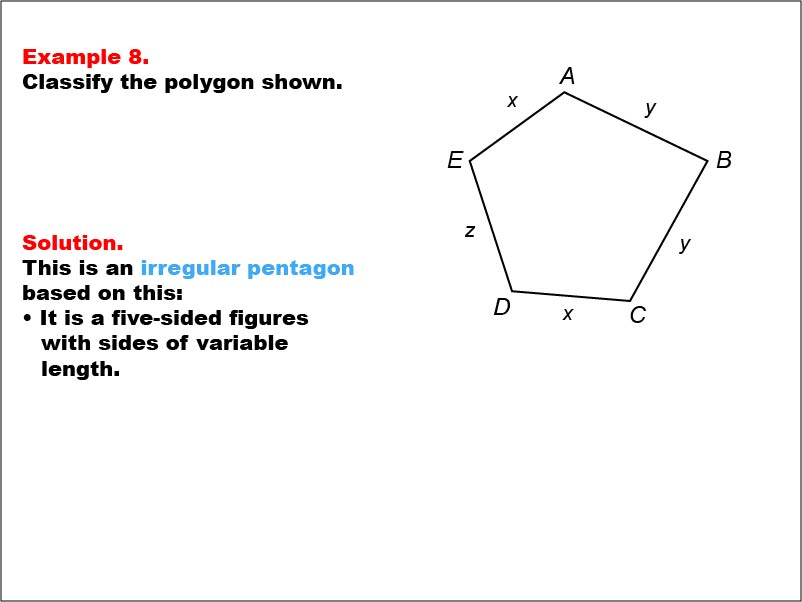
Display Title
Math Example--Polygons--Polygon Classification: Example 8
Display Title
Math Example--Polygons--Polygon Classification: Example 8

Topic
Polygons
Description
This example presents a pentagon labeled with vertices A, B, C, D, and E, where the sides are marked with variables x, y, and z, indicating different lengths. It demonstrates another instance of an irregular pentagon, emphasizing that side length variation results in irregularity.
Understanding polygon classification is crucial in geometry as it helps students recognize and categorize shapes based on their properties. This collection of examples highlights the differences between regular and irregular pentagons, focusing on side length as a key determining factor.
Exposure to multiple worked-out examples is vital for students to develop a comprehensive understanding of polygon classification. Each example presents a unique scenario, allowing students to apply their knowledge and reinforce their ability to distinguish between regular and irregular polygons.
Teacher's Script: Let's examine this pentagon together. We see sides labeled with different variables. What does this tell us about the side lengths? How does this information help us classify the polygon as irregular? Think about why having different side lengths affects the regularity of a shape.
For a complete collection of math examples related to Polygons click on this link: Math Examples: Polygon Classification Collection.
| Common Core Standards | CCSS.MATH.CONTENT.5.G.B.3, CCSS.MATH.CONTENT.7.G.B.6 |
|---|---|
| Grade Range | 6 - 8 |
| Curriculum Nodes |
Geometry • Polygons • Definition of a Polygon |
| Copyright Year | 2013 |
| Keywords | polygons, classification |